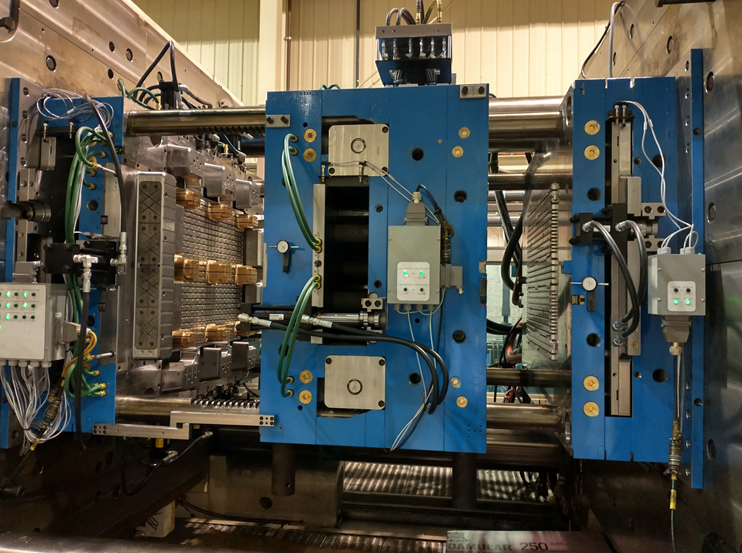Design and Production of Injection Moulding Chair Mould: A Comprehensive Guide
Introduction
Injection moulding is a widely used manufacturing process in the production of various plastic products, including chairs. The quality of the chair mould plays a crucial role in determining the final product’s quality and durability. This comprehensive guide will provide detailed insights into the design and production of injection moulding chair moulds.

Design Considerations
1. Material Selection: The choice of material for the chair mould depends on factors such as the expected lifespan of the mould, the type of plastic resin used, and the desired surface finish. Commonly used materials for chair moulds include steel and aluminum.
2. Mold Flow Analysis: Conducting a mold flow analysis helps identify potential design flaws and optimize the mould’s design. It ensures proper filling, cooling, and ejection of the plastic material, leading to improved product quality and reduced production time.
3. Parting Line and Ejection System: Determining the parting line, which separates the two halves of the mould, is important to ensure proper alignment and positioning of the chair’s components. The ejection system should also be designed carefully to facilitate the easy removal of the finished chair from the mould.
4. Cooling System: An efficient cooling system is crucial for achieving consistent cycle times and preventing shrinkage or warpage issues. Proper cooling channels should be incorporated into the mould design to ensure uniform cooling throughout the mould cavity.
5. Venting: Adequate venting is necessary to allow the escape of air and gases during the injection moulding process. Insufficient venting can lead to defects like gas traps and voids, affecting the chair’s structural integrity.
Production Process
1. 3D Modelling: Utilize advanced computer-aided design (CAD) software to create a detailed 3D model of the chair mould. This allows for visualization, analysis, and modification of the design before proceeding to the production phase.
2. CNC Machining: Use computer numerical control (CNC) machines to accurately fabricate the mould components from the chosen material. CNC machining ensures precision and reduces errors in the final product.
3. Heat Treatment: Some mould materials require heat treatment to enhance their hardness and durability. Proper heat treatment techniques, such as quenching and tempering, should be applied to achieve the desired material properties.
4. Electrode Machining: Electrodes are used to create cavities and cores within the mould. CNC machines are employed to create these electrodes with extreme precision, ensuring accurate replication of the chair’s design.

5. Assembly and Fitting: Assemble the various mould components, including the core, cavity, and cooling channels, ensuring proper alignment and fit. This stage requires careful attention to detail to ensure seamless functionality.
6. Testing and Adjustments: Conduct thorough testing of the chair mould prior to its use in the injection moulding process. This helps identify any design flaws or manufacturing defects that require adjustments or modifications.
Conclusion
The design and production of injection moulding chair moulds require meticulous attention to detail and adherence to industry standards. Proper material selection, mold flow analysis, and consideration of factors like parting line, cooling system, and venting are essential for creating high-quality chair moulds. By following this comprehensive guide, manufacturers can optimize their chair moulds’ design and production processes, leading to superior final products and increased customer satisfaction.
Previous:Creating a Plastic Garbage Bin Mold: An Innovative Solution for Waste Management
Next: Creating a Plastic Injection Crate Mold: An Essential Solution for Efficient Packaging
-
Creating a Plastic Stool Mold: The Ultimate Guide to the Manufacturing Process
2023-6-14
Plastic stools have become incredibly popular in recent years due to their durability, versatility, and cost-effectivene...
View details -
Unveiling the Secrets of Automotive Mould: An In-Depth Exploration
2023-12-26
Automotive moulds play a crucial role in the manufacturing process of automobiles. Without them, the sleek and stylish d...
View details -
Wholesale Home Appliance Molding Parts Online
2023-4-27
Home appliance molding parts are essential components used in various home appliances such as refrigerators, washing mac...
View details -
Innovative design, plastic large turnover box mold is more efficient
2024-3-19
Plastic large turnover box mold, this thing sounds very professional, but in fact it is a powerful assistant in our indu...
View details -
Designing a Plastic Modern Chair Mould: A Step-by-Step Guide
2023-6-17
When it comes to designing a plastic modern chair mould, there are several factors that need to be taken into considerat...
View details -
Is the Innovative New Design Chair Mold Being Introduced?
2023-7-26
In the world of furniture design and manufacturing, innovation plays a key role in staying ahead of the competition. One...
View details







